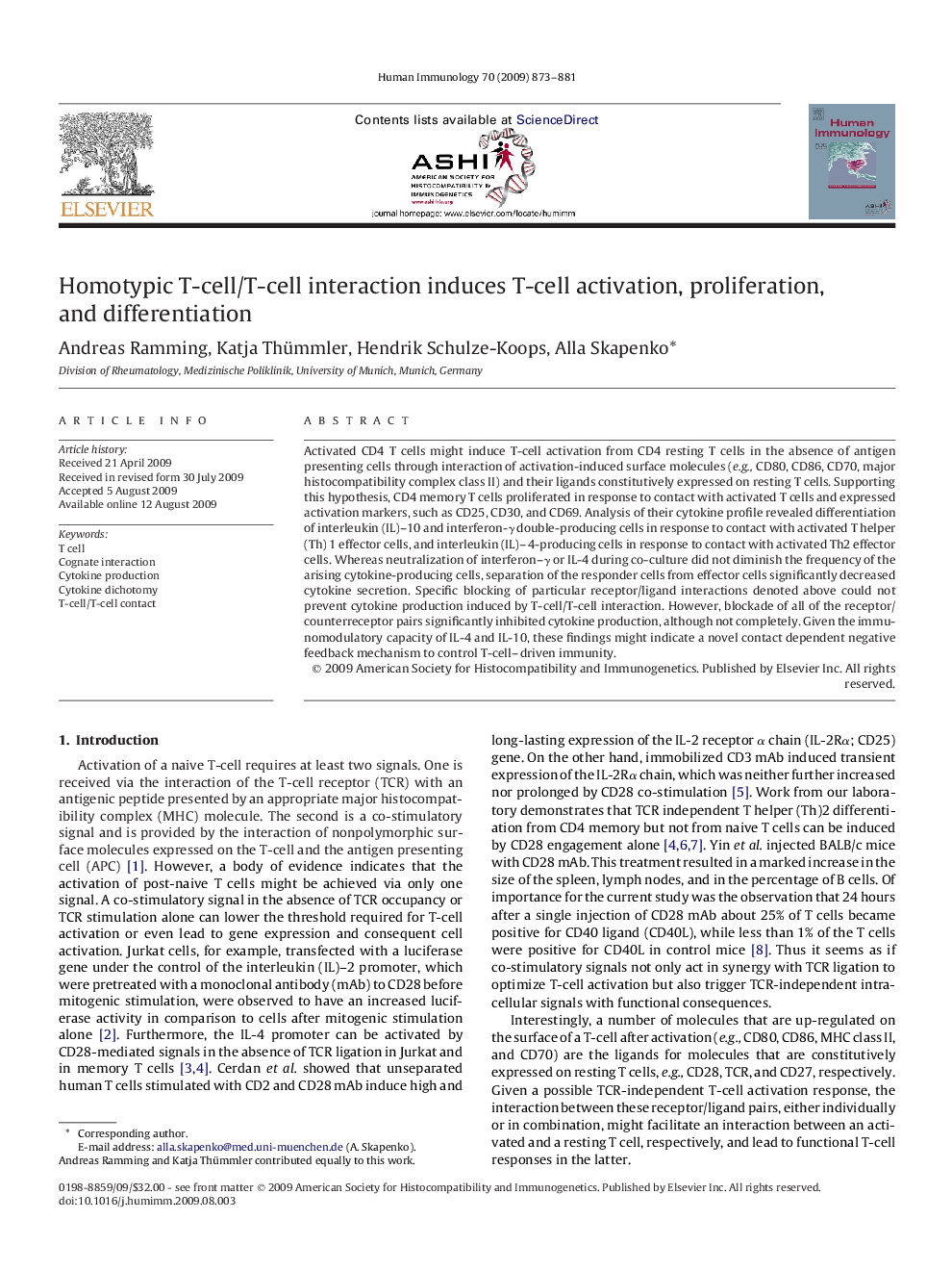| Article ID | Journal | Published Year | Pages | File Type |
|---|---|---|---|---|
| 3351408 | Human Immunology | 2009 | 9 Pages |
Activated CD4 T cells might induce T-cell activation from CD4 resting T cells in the absence of antigen presenting cells through interaction of activation-induced surface molecules (e.g., CD80, CD86, CD70, major histocompatibility complex class II) and their ligands constitutively expressed on resting T cells. Supporting this hypothesis, CD4 memory T cells proliferated in response to contact with activated T cells and expressed activation markers, such as CD25, CD30, and CD69. Analysis of their cytokine profile revealed differentiation of interleukin (IL)–10 and interferon-γ double-producing cells in response to contact with activated T helper (Th) 1 effector cells, and interleukin (IL)–4-producing cells in response to contact with activated Th2 effector cells. Whereas neutralization of interferon–γ or IL-4 during co-culture did not diminish the frequency of the arising cytokine-producing cells, separation of the responder cells from effector cells significantly decreased cytokine secretion. Specific blocking of particular receptor/ligand interactions denoted above could not prevent cytokine production induced by T-cell/T-cell interaction. However, blockade of all of the receptor/counterreceptor pairs significantly inhibited cytokine production, although not completely. Given the immunomodulatory capacity of IL-4 and IL-10, these findings might indicate a novel contact dependent negative feedback mechanism to control T-cell–driven immunity.
